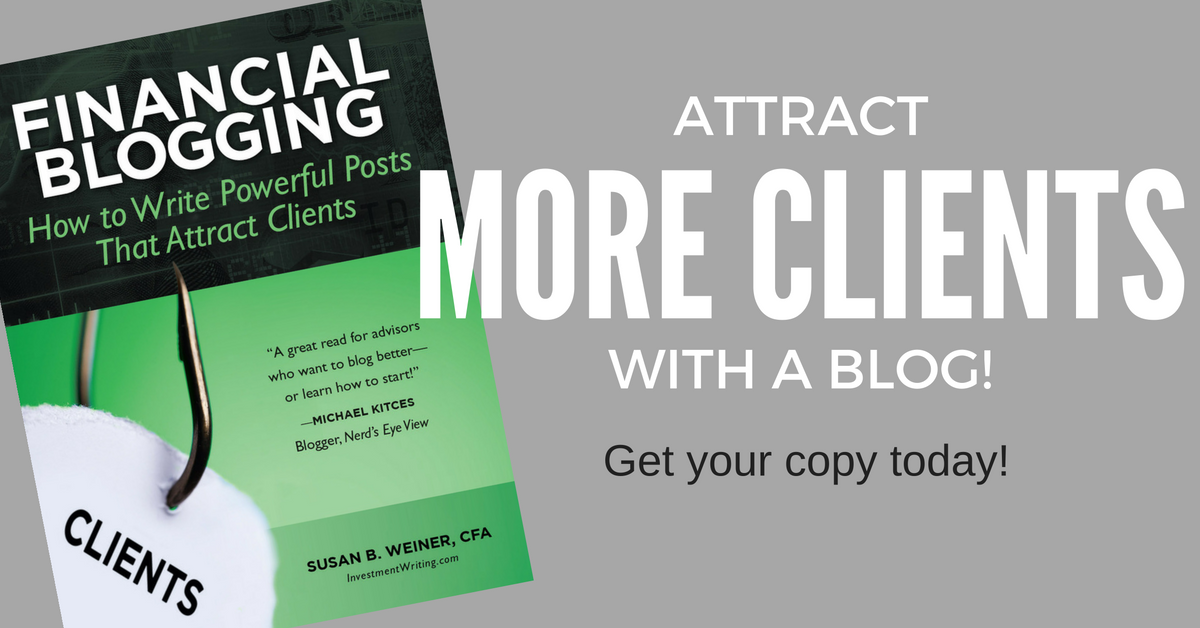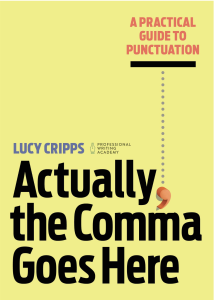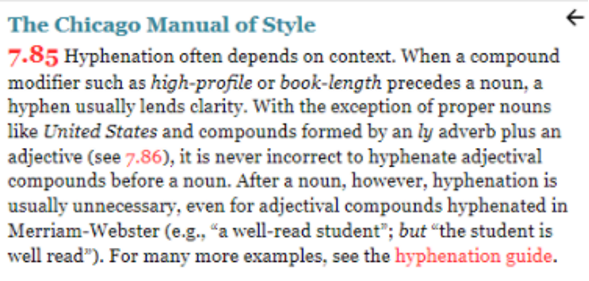Copyediting your firm’s bios seems like it should be easy. After all, bios simply report dry facts, right?
No! One problem is that employees may report the names of their employers and schools incorrectly. There’s probably no intention to deceive. Perhaps they knew the company by a short version of its name that wasn’t its legal name that should appear in a bio. Maybe their former employer or school has undergone a name change or been acquired. I’m familiar with the pain of acquisitions. I started working for Fleet Investment Advisors, which later became Columbia Management and is now Columbia Threadneedle Investments. It’s hard to keep up with all of the changes.
This kind of confusion is why, when copyediting bios recently for a client, I created a master list of school and company names, along with website addresses to document the organizations’ correct names.
You have options for how to refer to a past employer in a bio. For example, “ABC Investment Management (now XYZ Company)” or “XYZ Company (originally ABC Investment Management).” Whichever approach you choose, be consistent.
Paying attention to these details enhances people’s view of your organization as one that also pays attention to the details of how it manages client accounts.
Comma before “as well as”?
Early in my career, I learned to put a comma before “as well as” when using it to mean “and.” However, apparently the recommended practice has changed, according to my recent research.
“As a general rule, you don’t need a comma before as well as.” That’s because “Using a comma turns the thing you’re talking about with as well as into an aside–information that’s less important than the rest of the sentence,” says Grammarly in “As Well As Comma.”
ProWritingAid agrees in “Comma Before ‘As Well As’: How to Punctuate Correctly,” saying, “The only time you might want to include a comma before as well as is if you want to de-emphasize the part of the sentence beginning with this phrase.”
In this case, I relied on Grammarly as well as ProWritingAid as resources to help me refine my punctuation.
By the way, “as well as” and “and” are not always interchangeable. This is explained in “’As Well As’ in a Sentence: How to Use It (with Examples)” on the ProWritingAid website. I mostly use “and” but sometimes use “as well as” for better rhythm or to de-emphasize the information that follows “as well as.”
To avoid other common punctuation mistakes, read my post on “Bloggers’ top two punctuation mistakes.”
“Is It Safe to Use GenAI for This Task?”
This is the title of a Nielsen Norman Group decision tree infographic to help you decide whether it’s OK to use a form of generative artificial intelligence (AI) such as ChatGPT for a task.
The decision tree starts with the question: “Does it matter if the output is TRUE?” If it matters, the next question is “Do you have the expertise and/or time to verify the accuracy of the output?” Then, you must take responsibility for any inaccuracies that sneak through. Even if the truth doesn’t matter, you still should do some checking. I hope this decision tree and the related article help people to use generative AI responsibly.
This useful infographic appears about halfway through “When Should We Trust AI? Magic-8-Ball Thinking” by Caleb Sponheim of Nielsen Norman Group.
Financial Blogging still available at sale price
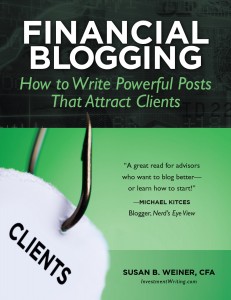
Financial Blogging’s paperback version is on sale direct from the author for shipment within the U.S. as long as supplies last.
You can still buy a paperback copy of Financial Blogging: How to Write Powerful Posts That Attract Clients for only $27 including shipping. Email me your shipping address so I can send you a PayPal invoice and confirm that you’re eligible for this offer.
The offer expires when I run out of copies. I have a limited supply of personal copies that I’m selling.
Michael Kitces says, “A great read for advisors who want to blog better—or learn how to start!” Learn more about the book.
Act now! The sale price is available only if you contact me directly.
Mixed feelings in my garden
 I felt joy watching two chickadees take turns feeding on the sunflowers I grew from seeds.
I felt joy watching two chickadees take turns feeding on the sunflowers I grew from seeds.
 However, I was not happy to see that some critter took a big bite out of a homegrown tomato. I also found a mostly intact tomato on the ground about 10 feet away, hiding under my rosebushes.
However, I was not happy to see that some critter took a big bite out of a homegrown tomato. I also found a mostly intact tomato on the ground about 10 feet away, hiding under my rosebushes.
Still, I love my garden!
What my clients say about me
 “Fast, effective, insightful. I can think of no better resource for superior financial writing.”
“Fast, effective, insightful. I can think of no better resource for superior financial writing.”
“Susan has an exceptional ability to tailor investment communications to the sophistication level of any audience. She has an uncanny ability to make very complex investment and/or economic topics accessible and understandable to anyone.”
“Susan’s particularly good at working through highly technical material very quickly. That’s very important in this business. A lot of people are good writers, but they have an extensive learning curve for something they’re unfamiliar with. Susan was able to jump very quickly into technical material.”
Read more testimonials!
Improve your investment commentary
Attract more clients, prospects, and referral sources by improving your investment commentary with 44 pages of the best tips from the InvestmentWriting.com blog.
Tips include how to organize your thoughts, edit for the “big picture,” edit line by line, and get more mileage out of your commentary.
Available in PDF format for only $9.99. Buy it now!

Boost your blogging now!
Financial Blogging: How to Write Powerful Posts That Attract Clients is available for purchase as a PDF ($39) or a paperback ($49, affiliate link).
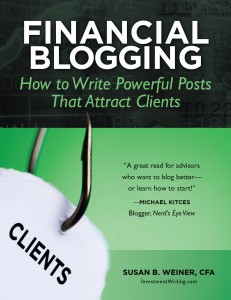


 Hire Susan to speak
Hire Susan to speak
Could members of your organization benefit from learning to write better? Hire Susan to present on “How to Write Investment Commentary People Will Read,” “Writing Effective Emails,” or a topic customized for your company.



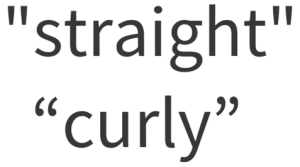











 I felt joy watching two chickadees take turns feeding on the sunflowers I grew from seeds.
I felt joy watching two chickadees take turns feeding on the sunflowers I grew from seeds. However, I was not happy to see that some critter took a big bite out of a homegrown tomato. I also found a mostly intact tomato on the ground about 10 feet away, hiding under my rosebushes.
However, I was not happy to see that some critter took a big bite out of a homegrown tomato. I also found a mostly intact tomato on the ground about 10 feet away, hiding under my rosebushes.

 Hire Susan to speak
Hire Susan to speak